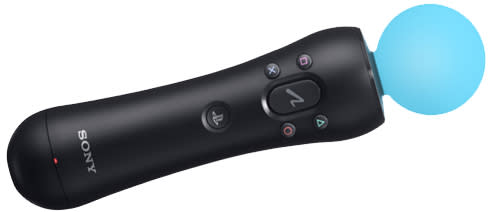How PlayStation Move shaped the PS4

The PlayStation Move has been called a lot of bad names. It's the PlayStation peripheral that's least used by game devs, least purchased by console owners, and least spoken of by Sony itself. Some of that sentiment's been turning lately, ever since Sony showed off Project Morpheus a few weeks ago and demonstrated what an impact something like Move has on virtual reality immersion (the controller works for both PS3 and PS4). And the guy who heads up PlayStation's worldwide game studios, Shuhei " Shu" Yoshida, says Move is responsible for far more than it's given credit.
"This project was one of the very first hardware projects formed with three groups: the software engineering team at SCEA, the hardware engineers at SCEI in Japan, and the Worldwide Studios team making games using the motion controller," Yoshida told attendees of a presentation tonight at the Computer History Museum in Mountain View, California. He and PlayStation 4 lead architect Mark Cerny explained that this trifecta was the first in a string of major collaborations: PlayStation Vita, PlayStation 4, and now Project Morpheus.
The Move was originally called the "Y-con" (we're checking on the spelling). Cerny highlighted the name on purpose: it's representative of the trio of groups coming together on a single device. Three points in a Y, three groups at Sony -- thus, the Y-con. Sony R&D engineer Richard Marks may be the man debuting new PlayStation peripherals (he's based at SCEA), but his team's work is the product of a collaboration with the folks actually making the games.
More than just three groups coming together, it was three groups at Sony working as one. It signaled a change from the previous approach to hardware in the gaming world. Yoshida offered an example by contrast: PlayStation 3's Sixaxis controller.
Yoshida: I was managing the west development group at the time and I get a call from a product manager in Japan, like, three weeks before E3. And she told me that we should know that the new controller we're developing, it has motion sensors in it. And I'm like, Oh, okay, great! So, look at that!
So she said, "We have a prototype we'll send you, so can you make something to show at E3."Cerny: So they'd managed to develop a new controller without ever involving the person who made games for a consumer.
Yikes, right? Thankfully, the concept of "Y" solidified as time went on, and now we've got great devices like the PlayStation 4 and Vita to enjoy as a result. It won't change our opinion of the Move's lacking software library, but we can't say we won't look a bit more fondly on the poor old Move as the years roll on.

